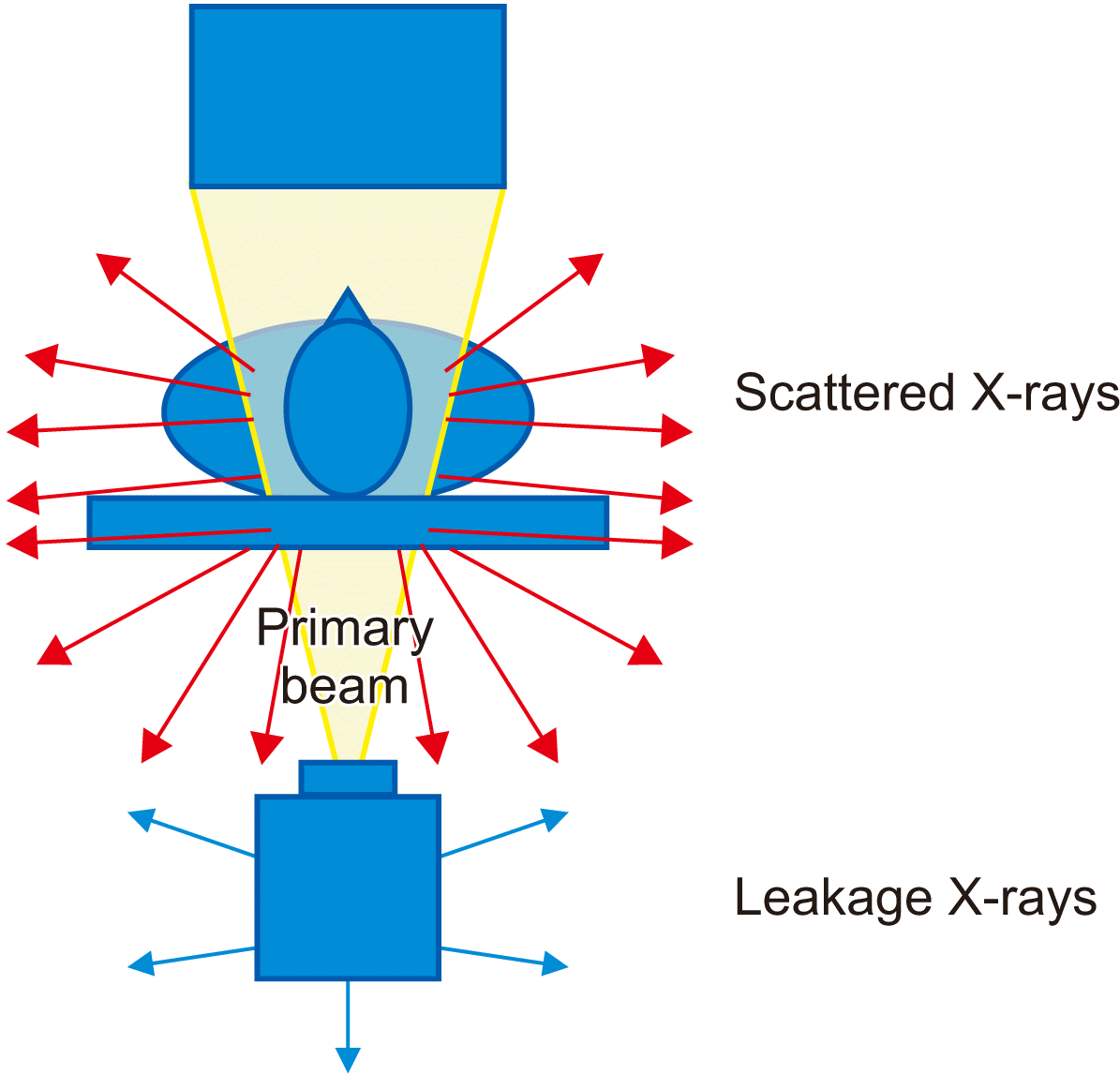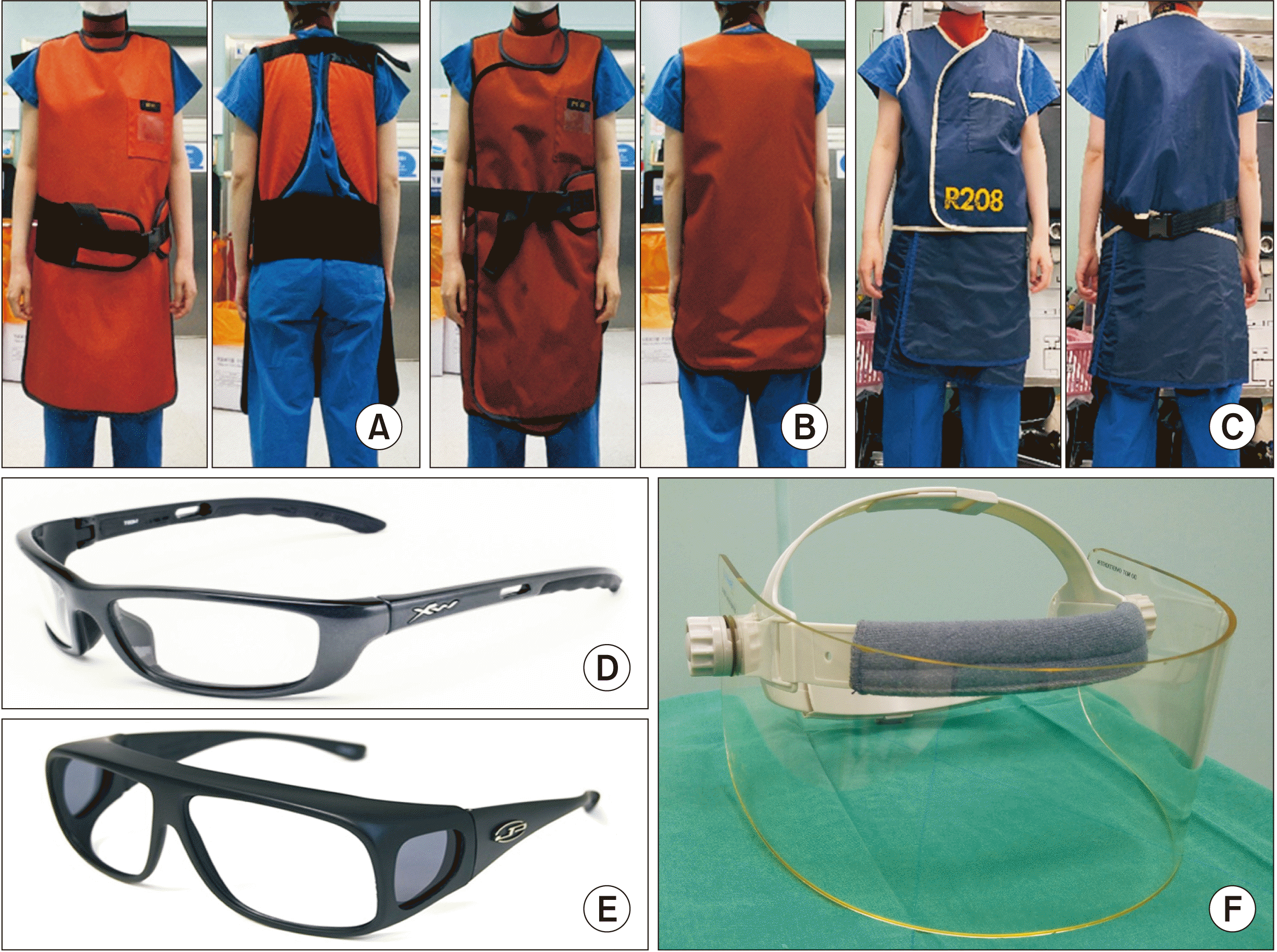1. Tapio S, Little MP, Kaiser JC, Impens N, Hamada N, Georgakilas AG, et al. 2021; Ionizing radiation-induced circulatory and metabolic diseases. Environ Int. 146:106235. DOI:
10.1016/j.envint.2020.106235. PMID:
33157375.

2. Paulo G, Bartal G, Vano E. 2021; Radiation dose of patients in fluoroscopically guided interventions: an update. Cardiovasc Intervent Radiol. 44:842–8. DOI:
10.1007/s00270-020-02667-3. PMID:
33034703.

3. Vera GV, Aleksandra F, Dragan K, Andrija H. 1997; Assessment of genome damage in occupational exposure to ionising radiation and ultrasound. Mutat Res. 395:101–5. DOI:
10.1016/S1383-5718(97)00149-6. PMID:
9465919.

4. Maffei F, Angelini S, Forti GC, Violante FS, Lodi V, Mattioli S, et al. 2004; Spectrum of chromosomal aberrations in peripheral lymphocytes of hospital workers occupationally exposed to low doses of ionizing radiation. Mutat Res. 547:91–9. DOI:
10.1016/j.mrfmmm.2003.12.003. PMID:
15013703.

5. Milacic S. 2009; Risk of occupational radiation-induced cataract in medical workers. Med Lav. 100:178–86. PMID:
19601402.
6. Mastrangelo G, Fedeli U, Fadda E, Giovanazzi A, Scoizzato L, Saia B. 2005; Increased cancer risk among surgeons in an orthopaedic hospital. Occup Med (Lond). 55:498–500. DOI:
10.1093/occmed/kqi048. PMID:
16140840.

7. Roguin A, Goldstein J, Bar O, Goldstein JA. 2013; Brain and neck tumors among physicians performing interventional procedures. Am J Cardiol. 111:1368–72. DOI:
10.1016/j.amjcard.2012.12.060. PMID:
23419190.

8. Chartier H, Fassier P, Leuraud K, Jacob S, Baudin C, Laurier D, et al. 2020; Occupational low-dose irradiation and cancer risk among medical radiation workers. Occup Med (Lond). 70:476–84. DOI:
10.1093/occmed/kqaa130. PMID:
32756890.

11. Cheon BK, Kim CL, Kim KR, Kang MH, Lim JA, Woo NS, et al. 2018; Radiation safety: a focus on lead aprons and thyroid shields in interventional pain management. Korean J Pain. 31:244–52. DOI:
10.3344/kjp.2018.31.4.244. PMID:
30310549. PMCID:
PMC6177538.

13. Vano E, Gonzalez L, Fernandez JM, Prieto C, Guibelalde E. 2006; Influence of patient thickness and operation modes on occupational and patient radiation doses in interventional cardiology. Radiat Prot Dosimetry. 118:325–30. DOI:
10.1093/rpd/nci369. PMID:
16439516.

14. Manchikanti L, Cash KA, Moss TL, Pampati V. 2002; Radiation exposure to the physician in interventional pain management. Pain Physician. 5:385–93. Erratum in: Pain Physician 2003; 6: 141. DOI:
10.36076/ppj.2002/5/385. PMID:
16886017.

15. Madder RD, VanOosterhout S, Mulder A, Ten Brock T, Clarey AT, Parker JL, et al. 2019; Patient body mass index and physician radiation dose during coronary angiography. Circ Cardiovasc Interv. 12:e006823. DOI:
10.1161/CIRCINTERVENTIONS.118.006823. PMID:
30599769.

16. Chang YJ, Kim AN, Oh IS, Woo NS, Kim HK, Kim JH. 2014; The radiation exposure of radiographer related to the location in C-arm fluoroscopy-guided pain interventions. Korean J Pain. 27:162–7. DOI:
10.3344/kjp.2014.27.2.162. PMID:
24748945. PMCID:
PMC3990825.

17. Fink GE. 2009; Radiation safety in fluoroscopy for neuraxial injections. AANA J. 77:265–9. PMID:
19731844.
18. Peled A, Moshe S, Chodick G. 2018; [Ionizing radiation and the risk for cataract and lens opacities]. Harefuah. 157:650–4. Hebrew. PMID:
30343544.
19. Albi E, Cataldi S, Lazzarini A, Codini M, Beccari T, Ambesi-Impiombato FS, et al. 2017; Radiation and thyroid cancer. Int J Mol Sci. 18:911. DOI:
10.3390/ijms18050911. PMID:
28445397. PMCID:
PMC5454824.

21. Hamada N, Fujimichi Y. 2015; Role of carcinogenesis related mechanisms in cataractogenesis and its implications for ionizing radiation cataractogenesis. Cancer Lett. 368:262–74. DOI:
10.1016/j.canlet.2015.02.017. PMID:
25687882.

22. Stewart FA, Akleyev AV, Hauer-Jensen M, Hendry JH, Kleiman NJ, et al. Authors on behalf of ICRP. 2012; ICRP publication 118: ICRP statement on tissue reactions and early and late effects of radiation in normal tissues and organs--threshold doses for tissue reactions in a radiation protection context. Ann ICRP. 41:1–322. DOI:
10.1016/j.icrp.2012.02.001. PMID:
22925378.

23. Dauer LT, Ainsbury EA, Dynlacht J, Hoel D, Klein BEK, Mayer D, et al. 2017; Guidance on radiation dose limits for the lens of the eye: overview of the recommendations in NCRP Commentary No. 26. Int J Radiat Biol. 93:1015–23. DOI:
10.1080/09553002.2017.1304669. PMID:
28346025.

24. Kim MJ, Kim JH. 2017; Radiation exposure and protection for eyes in pain management. Anesth Pain Med. 12:297–305. DOI:
10.17085/apm.2017.12.4.297.

25. Choi EJ, Go G, Han WK, Lee PB. 2020; Radiation exposure to the eyes and thyroid during C-arm fluoroscopy-guided cervical epidural injections is far below the safety limit. Korean J Pain. 33:73–80. DOI:
10.3344/kjp.2020.33.1.73. PMID:
31888321. PMCID:
PMC6944368.

27. Rivett C, Dixon M, Matthews L, Rowles N. 2016; An assessment of the dose reduction of commercially available lead protective glasses for interventional radiology staff. Radiat Prot Dosimetry. 172:443–52. DOI:
10.1093/rpd/ncv540. PMID:
26769907.

28. Magee JS, Martin CJ, Sandblom V, Carter MJ, Almén A, Cederblad Å, et al. 2014; Derivation and application of dose reduction factors for protective eyewear worn in interventional radiology and cardiology. J Radiol Prot. 34:811–23. DOI:
10.1088/0952-4746/34/4/811. PMID:
25332300.

29. Miller DL, Vañó E, Bartal G, Balter S, Dixon R, Padovani R, et al. 2010; Occupational radiation protection in interventional radiology: a joint guideline of the Cardiovascular and Interventional Radiology Society of Europe and the Society of Interventional Radiology. Cardiovasc Intervent Radiol. 33:230–9. DOI:
10.1007/s00270-009-9756-7. PMID:
20020300. PMCID:
PMC2841268.

30. Kuipers G, Velders XL, de Winter RJ, Reekers JA, Piek JJ. 2008; Evaluation of the occupational doses of interventional radiologists. Cardiovasc Intervent Radiol. 31:483–9. DOI:
10.1007/s00270-008-9307-7. PMID:
18266030. PMCID:
PMC2367387.

31. Wang RR, Kumar AH, Tanaka P, Macario A. 2017; Occupational Radiation exposure of anesthesia providers: a summary of key learning points and resident-led radiation safety projects. Semin Cardiothorac Vasc Anesth. 21:165–71. DOI:
10.1177/1089253217692110. PMID:
28190371.

32. Bryant PA, Croft J, Cole P. 2018; Integration of risks from multiple hazards into a holistic ALARA/ALARP demonstration. J Radiol Prot. 38:81–91. DOI:
10.1088/1361-6498/aa8e53. PMID:
29211686.

34. Shuler FD, Daigre JL, Pham D, Kish VL. 2013; Laser targeting with C-arm fluoroscopy: effect on image acquisition and radiation exposure. J Orthop Trauma. 27:e97–102. DOI:
10.1097/BOT.0b013e31826625df. PMID:
22773019.
35. Kim AN, Chang YJ, Cheon BK, Kim JH. 2014; How effective are radiation reducing gloves in C-arm fluoroscopy-guided pain interventions? Korean J Pain. 27:145–51. DOI:
10.3344/kjp.2014.27.2.145. PMID:
24748943. PMCID:
PMC3990823.

36. Jung CH, Ryu JS, Baek SW, Oh JH, Woo NS, Kim HK, et al. 2013; Radiation exposure of the hand and chest during C-arm fluoroscopy-guided procedures. Korean J Pain. 26:51–6. DOI:
10.3344/kjp.2013.26.1.51. PMID:
23342208. PMCID:
PMC3546211.

37. Livingstone RS, Varghese A. 2018; A simple quality control tool for assessing integrity of lead equivalent aprons. Indian J Radiol Imaging. 28:258–62. DOI:
10.4103/ijri.IJRI_374_17. PMID:
30050253. PMCID:
PMC6038217.

38. Fakhoury E, Provencher JA, Subramaniam R, Finlay DJ. 2019; Not all lightweight lead aprons and thyroid shields are alike. J Vasc Surg. 70:246–50. DOI:
10.1016/j.jvs.2018.07.055. PMID:
30292602.

40. Hong SW, Kim TW, Kim JH. 2021; Radiation exposure to the back with different types of aprons. Radiat Prot Dosimetry. 193:185–9. DOI:
10.1093/rpd/ncab044. PMID:
33839791.

41. Livingstone RS, Varghese A, Keshava SN. 2018; A study on the use of radiation-protective apron among interventionists in radiology. J Clin Imaging Sci. 8:34. DOI:
10.4103/jcis.JCIS_34_18. PMID:
30197825. PMCID:
PMC6118106.

42. Chou LB, Cox CA, Tung JJ, Harris AH, Brooks-Terrell D, Sieh W. 2010; Prevalence of cancer in female orthopaedic surgeons in the United States. J Bone Joint Surg Am. 92:240–4. DOI:
10.2106/JBJS.H.01691. PMID:
20048119.

43. Müller LP, Suffner J, Wenda K, Mohr W, Rommens PM. 1998; Radiation exposure to the hands and the thyroid of the surgeon during intramedullary nailing. Injury. 29:461–8. DOI:
10.1016/S0020-1383(98)00088-6. PMID:
9813705.

44. Lee SY, Min E, Bae J, Chung CY, Lee KM, Kwon SS, et al. 2013; Types and arrangement of thyroid shields to reduce exposure of surgeons to ionizing radiation during intraoperative use of C-arm fluoroscopy. Spine (Phila Pa 1976). 38:2108–12. DOI:
10.1097/BRS.0b013e3182a8270d. PMID:
23963017.

45. Wagner LK, Mulhern OR. 1996; Radiation-attenuating surgical gloves: effects of scatter and secondary electron production. Radiology. 200:45–8. DOI:
10.1148/radiology.200.1.8657942. PMID:
8657942.

46. Cousin AJ, Lawdahl RB, Chakraborty DP, Koehler RE. 1987; The case for radioprotective eyewear/facewear. Practical implications and suggestions. Invest Radiol. 22:688–92. DOI:
10.1097/00004424-198708000-00012. PMID:
3667176.
47. Kirkwood ML, Klein A, Guild J, Arbique G, Xi Y, Tsai S, et al. 2020; Novel modification to leaded eyewear results in significant operator eye radiation dose reduction. J Vasc Surg. 72:2139–44. DOI:
10.1016/j.jvs.2020.02.049. PMID:
32276011.

48. Koukorava C, Farah J, Struelens L, Clairand I, Donadille L, Vanhavere F, et al. 2014; Efficiency of radiation protection equipment in interventional radiology: a systematic Monte Carlo study of eye lens and whole body doses. J Radiol Prot. 34:509–28. DOI:
10.1088/0952-4746/34/3/509. PMID:
24938591.

49. Lian Y, Xiao J, Ji X, Guan S, Ge H, Li F, et al. 2015; Protracted low-dose radiation exposure and cataract in a cohort of Chinese industry radiographers. Occup Environ Med. 72:640–7. DOI:
10.1136/oemed-2014-102772. PMID:
26163545.

50. Maina PM, Motto JA, Hazell LJ. 2020; Investigation of radiation protection and safety measures in Rwandan public hospitals: readiness for the implementation of the new regulations. J Med Imaging Radiat Sci. 51:629–38. DOI:
10.1016/j.jmir.2020.07.056. PMID:
32839139.

51. Ryu JS, Baek SW, Jung CH, Cho SJ, Jung EG, Kim HK, et al. 2013; The survey about the degree of damage of radiation-protective shields in operation room. Korean J Pain. 26:142–7. DOI:
10.3344/kjp.2013.26.2.142. PMID:
23614075. PMCID:
PMC3629340.

52. Christodoulou EG, Goodsitt MM, Larson SC, Darner KL, Satti J, Chan HP. 2003; Evaluation of the transmitted exposure through lead equivalent aprons used in a radiology department, including the contribution from backscatter. Med Phys. 30:1033–8. DOI:
10.1118/1.1573207. PMID:
12852526.

53. Brown PH, Thomas RD, Silberberg PJ, Johnson LM. 2000; Optimization of a fluoroscope to reduce radiation exposure in pediatric imaging. Pediatr Radiol. 30:229–35. DOI:
10.1007/s002470050728. PMID:
10789900.

54. Cho JH, Kim JY, Kang JE, Park PE, Kim JH, Lim JA, et al. 2011; A study to compare the radiation absorbed dose of the C-arm fluoroscopic modes. Korean J Pain. 24:199–204. DOI:
10.3344/kjp.2011.24.4.199. PMID:
22220241. PMCID:
PMC3248583.

55. Aufrichtig R, Xue P, Thomas CW, Gilmore GC, Wilson DL. 1994; Perceptual comparison of pulsed and continuous fluoroscopy. Med Phys. 21:245–56. DOI:
10.1118/1.597285. PMID:
8177157.

56. Baek SW, Ryu JS, Jung CH, Lee JH, Kwon WK, Woo NS, et al. 2013; A randomized controlled trial about the levels of radiation exposure depends on the use of collimation C-arm fluoroscopic-guided medial branch block. Korean J Pain. 26:148–53. DOI:
10.3344/kjp.2013.26.2.148. PMID:
23614076. PMCID:
PMC3629341.

58. Kim TH, Hong SW, Woo NS, Kim HK, Kim JH. 2017; The radiation safety education and the pain physicians' efforts to reduce radiation exposure. Korean J Pain. 30:104–15. DOI:
10.3344/kjp.2017.30.2.104. PMID:
28416994. PMCID:
PMC5392654.







 PDF
PDF Citation
Citation Print
Print






 XML Download
XML Download